SubD examples and models
-
@unknownuser said:
OpenSubdiv uses Catmull-Clack. But with more improvements than the variants I implemented myself. In the current version of SUbD the UVs are linearly interpolated. OpenSubdiv offer some more options - though I'm still exploring exactly what that means.
Something in this fashion (at 10:17)
Are you going to grant us all those options mentoned below, or concentrate on one working the best? -
@rich o brien said:
Shift + E on selected edges to crease.
Or hit N to bring up property panel. At the top you can see crease slider.
@Rich @Thomhom sorry to get a bit off topic, but neither OpenSubDiv nor the regular SubDiv in Blender seem to assume the crease.
Open subdiv doesn't allow to subdiv in edit mode so I can't interactivelly see how I'm creasing.
Of course I must be doing something wrong... That goes to show how Sketchup is intuitive for sketchup users, making all other software cumbersome to use, so again, congratulations on your work Thomthom.
There is still a big difference in SubD in Sketchup or SubD in Blender though, the control mesh UV stays within UV unwrap when you deform it, while in Sketchup I suspect it doesn't as deforming an edge or a face will make Sketchup assume it should extend the tiling:
I've shared this concern with other developers dealing with UV unwrap
 but it makes sense sharing it here too:
but it makes sense sharing it here too:Would it be possible to have this behaviour by default on a set of faces that are being used in your control mesh?

-
@rv1974 said:
Something in this fashion (at 10:17)
Are you going to grant us all those options mentoned below, or concentrate on one working the best?I'm working on exposing these options to the SUbD UI. I was thinking of trying to pick default values that makes sense most of the time - but make it easy to switch.
But need to work on the names. Like in that video the naming is weird. "Smooth (Always Sharp)" ... I mean, whut? Oxymoron descriptions that make no sense. And "Bilinear" - maybe it's just me, but I struggle to visualize what that really means - at least compared to "Smooth". So I need to figure out some better names. And I was thinking the UI would have some thumbnails to illustrate what goes on.
In the OSD docs there are some visualizations, but I'm still not quite happy with that style: http://graphics.pixar.com/opensubdiv/docs/subdivision_surfaces.html#face-varying-interpolation-rules
-
@jql said:
Would it be possible to have this behaviour by default on a set of faces that are being used in your control mesh?
Nothing exist that allow UVs to be pinned like that. Though extensions can make sure to preserve UVs like that - Vertex Tools will for instance. And QFT have a save and reload feature - such that if you only distort the mesh with any tool that mess up UVs you can restore them to the vertices.
-
-
General question:
Would this plugin or any other have any benefits (speed, reliability etc.) being part SU core code (and not as add-on)? -
@rv1974 said:
General question:
Would this plugin or any other have any benefits (speed, reliability etc.) being part SU core code (and not as add-on)?This plugins would have a benefit to API access to the viewport pipeline - as then the subdivided mesh could be sent directly to the OpenGL pipeline instead of having to regenerate SketchUp faces. Then SU would know only about the control mesh and any tool could be used to manipulate the mesh while seeing the subdivided result.
Though I have some ideas for that which might make it less of an issue.(I feel we should be having a separate thread for all of this and keep this thread about example models. Can a mod split out the recent posts?)
-
@rv1974 said:
General question:
Would this plugin or any other have any benefits (speed, reliability etc.) being part SU core code (and not as add-on)?As with all my questions with blender... I will get there eventually...
-
How to cut Holes into a Sphere
@pilou said:
Maybe this ?

thanks Pilou for your suggestion!
@thomthom said:
...The quads around it seem to flow in line with the hole...
thanks Thomthom for this bunch of possibilities!
I tried a just slightly more complex form for the proxy which in deed provides a much better result.
in this context, here are two interesting and well done videos which deal with this topic (they are Maya, but the principles are similar to SketchUp)
https://www.youtube.com/watch?v=7qe2MWrXGHo
https://www.youtube.com/watch?v=lvMfoH5Ikrc
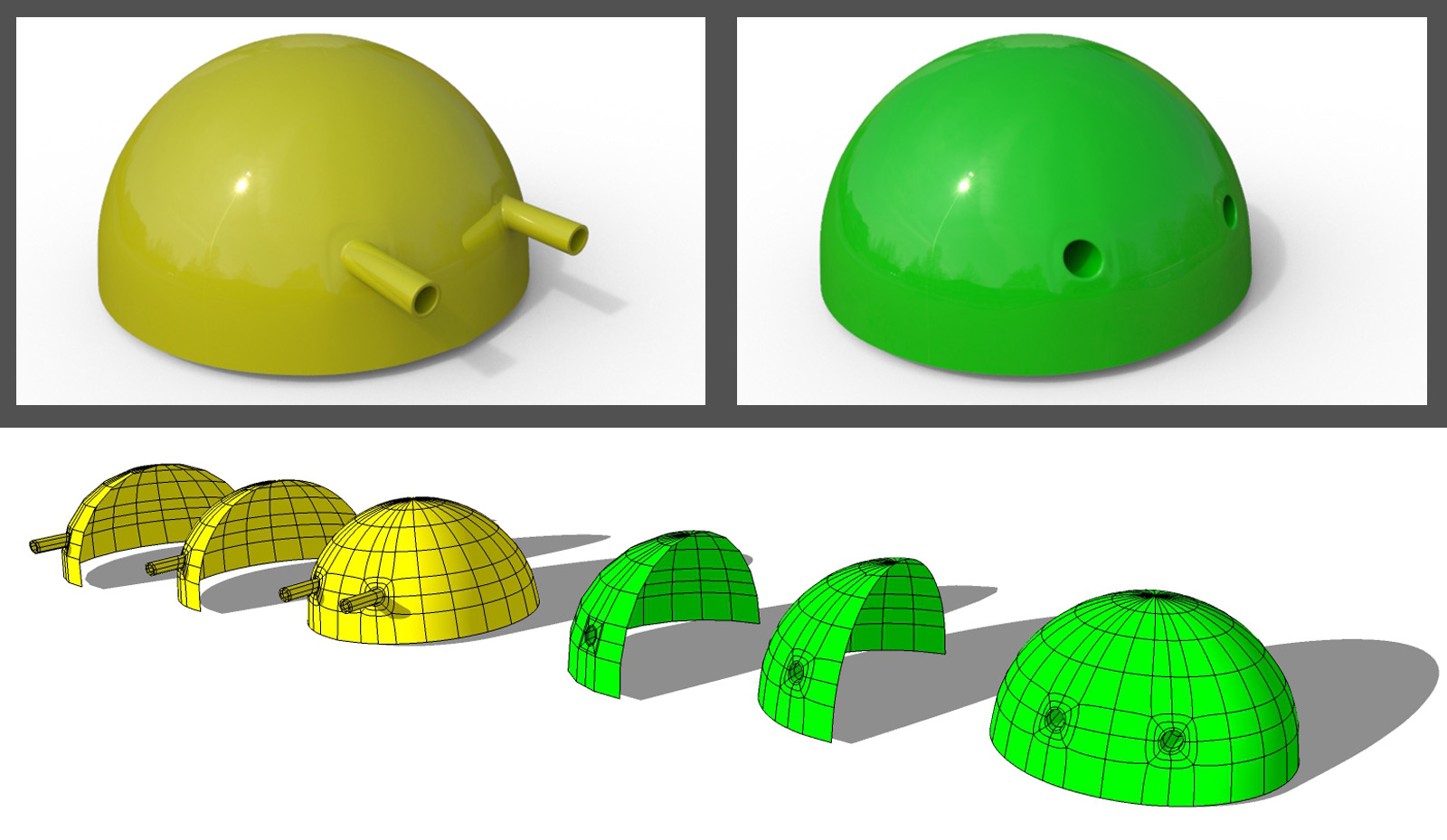
-
@hornoxx said:
I tried a just slightly more complex form for the proxy which in deed provides a much better result.
Thanks for the links! And thanks for sharing back your explorations.
This model is very interesting. What I'm thinking - looking at this - is that it appear that one want the extra loops to lie on the continuation of the original spherical shape;
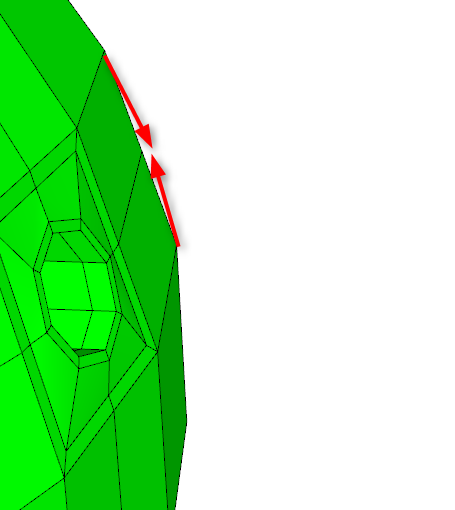
So maybe one can start out with a half-sphere with more segments - then strip away the loops you don't need. (Only keeping the extra ones around the eyes.) Then it might be possible to avoid the mesh around the eyes distorting and turning flat.
....hmm.... I need to tinker with this one.
-
Left-most is the starting point - circle with 48 segments in both vertical and horizontal. Then I removed removing some redundant loops - keeping the ones around the eye. Then extruded two tubes to intersect the sphere - horizontal center matched the horizontal loop on the sphere. The vertical axis of the tube didn't match the vertical loops of the sphere and here there's probably some minor distortion, but it was so close that it's not easy to see. Might be more visible is I render with glossy material.
But having the extra loops for the center axes of the tubes be lined up at the mathematical intersection of the sphere helped maintain continuation.
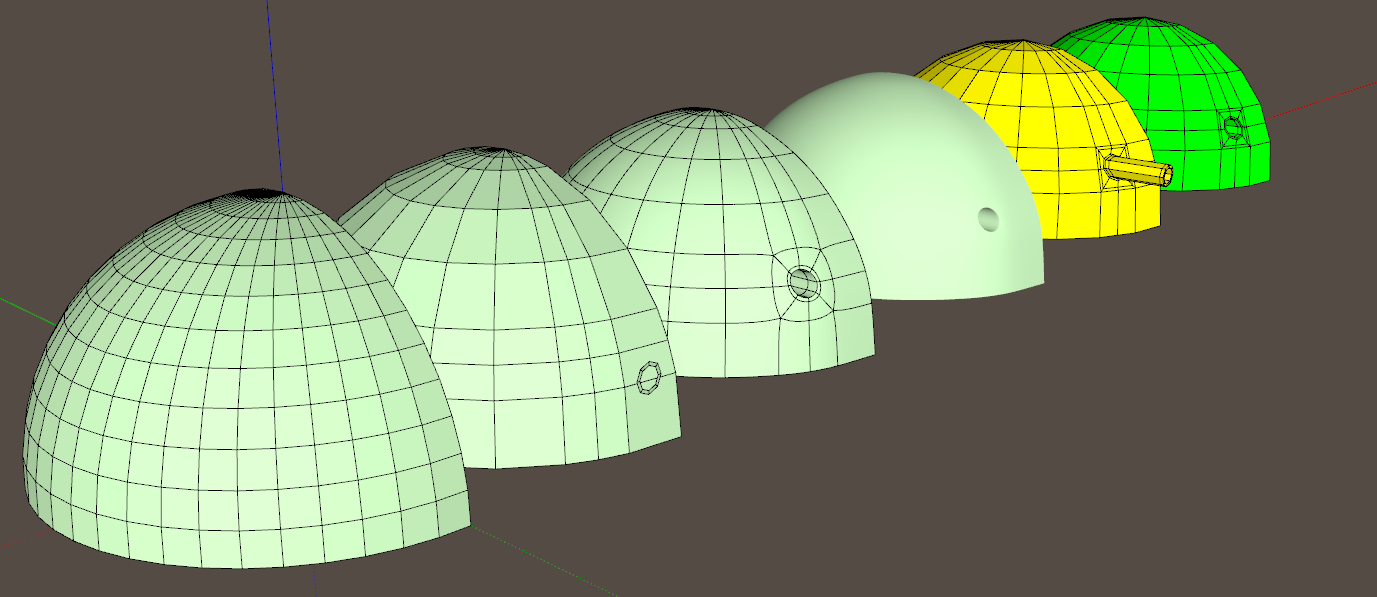
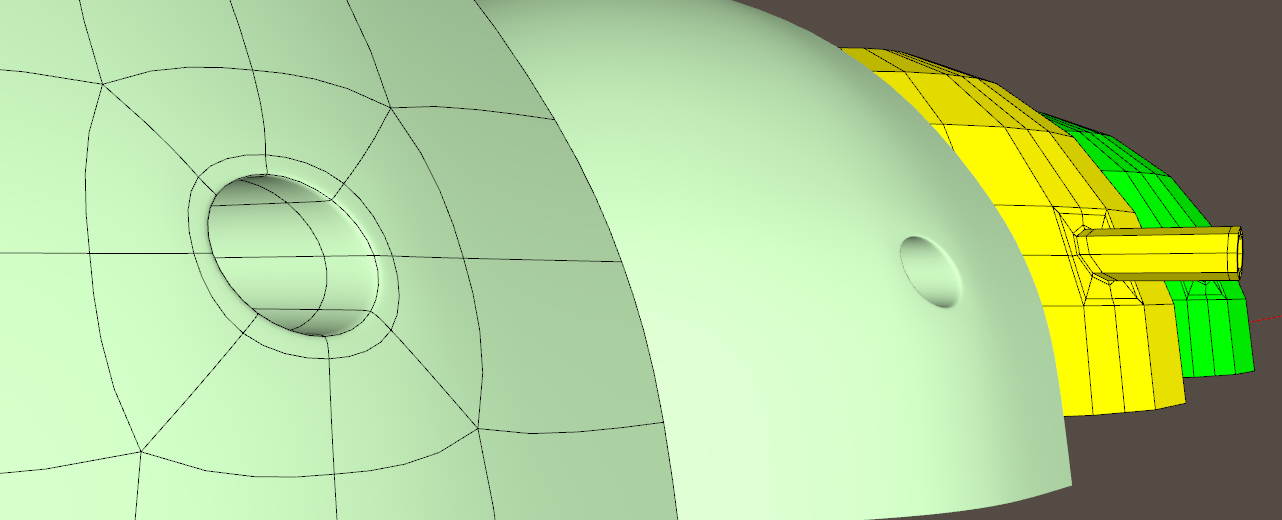
-
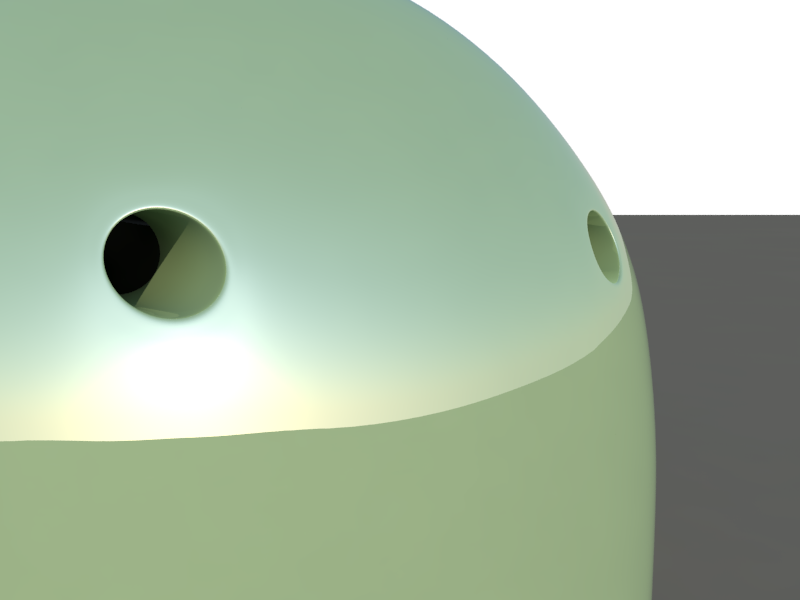
Still some minor distortion, but I think it could perhaps be corrected by pushing all the vertices around the eye to the limit surface of the sphere. ...hmm.... script maybe...
-
now maybe my Relax [FR] will be revisited? the edges artifacts can be better resolved with the ability to relax vertices at pinch points.
-
In this case I don't think Relax would help much - it might even make the surface flatter and cause more distortion.
But your sentiment is noted - Relax is high on the list. OpenSubdiv hi-jacked the top of the list.
-
@ThomThom - I like these examples. In particular sharing the file so I can see how you created the whole........
In continuing to learn how to use the tools, here is a very silly one. I created a vase, made it transparent, then place a piece of my car wash equipment inside it to demonstrate that it really was a quad face object using transparency. Yes the glass is too thick but that is part of learning as well.
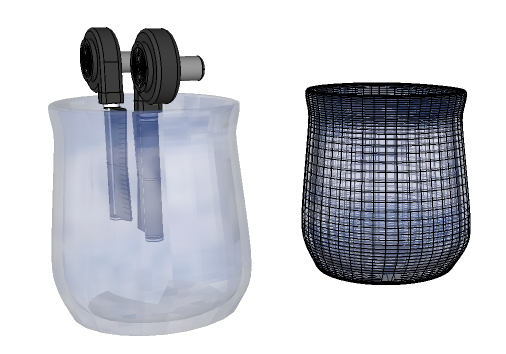
I had planned on starting my intro guide today but I am not feeling well so it might be a few days. I will start another thread when I am ready to share. In the mean time, I want to come up with something that I can draw in the guide that will demonstrate the basics and that I can use to really help people like myself (beginners in this area) to understand the what, why and how of using these tools. I am going to limit it to the basic steps of creating objects with quad faces. Later, I would then like to explore the topics of UV and hopefully rendering. But just one step at a time for now.
If anyone has a very basic object that you would like to see drawn with the quad face tools please feel free to share it with me. I do not plan to cover every aspect and every option with every tool but just include enough to help others who are trying to learn how to get started. I promise I will do that in another thread so that we get this one back on track.
I had to reduce some faces in order to include the skp file..........
-
Hey, how do you guys save out the renders with the wireframe? After doing a Thea render in the viewport with edges and saving it the edges where omitted. (I'm digging up all my ol' render licenses...)
-
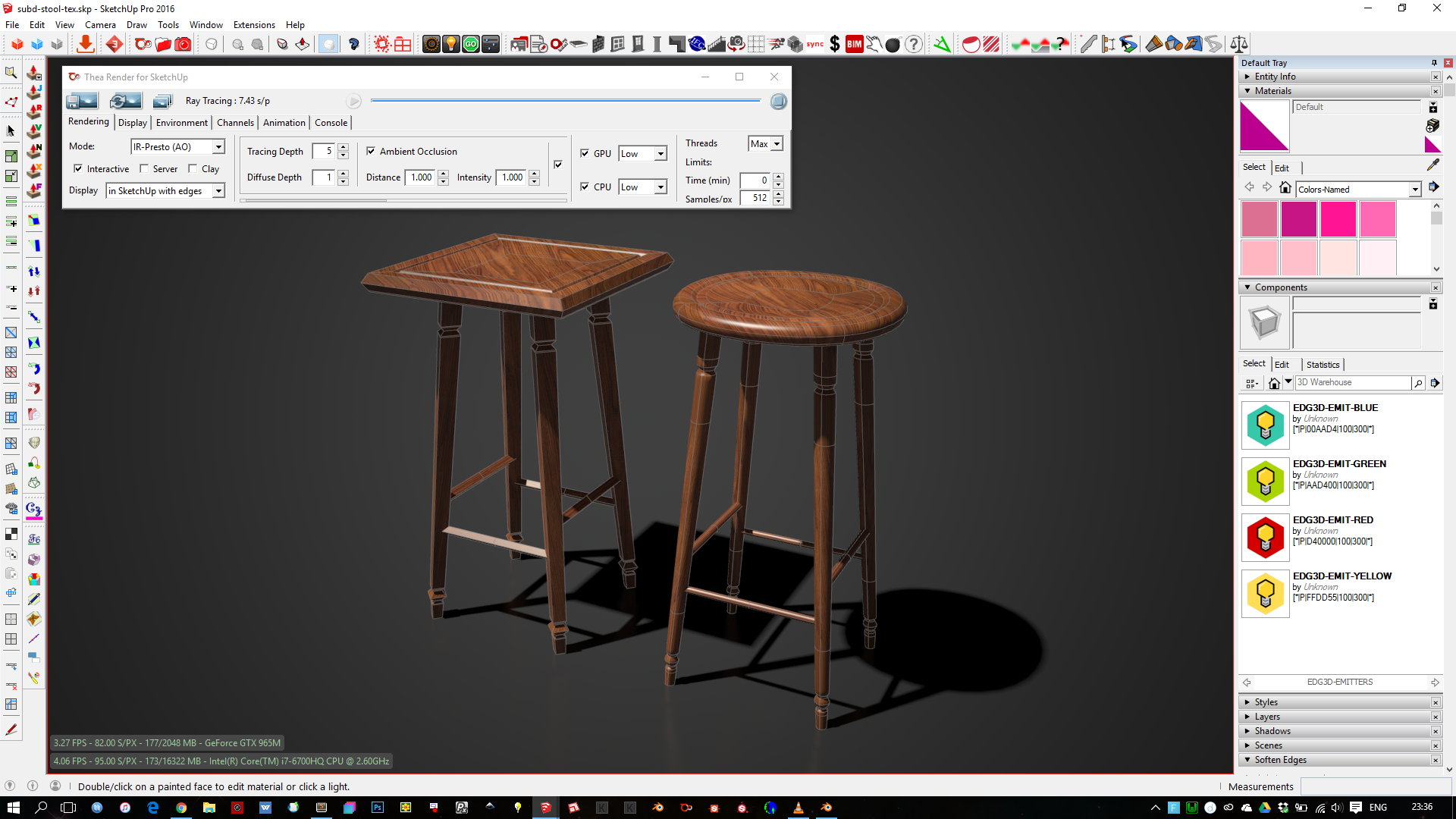
I find Presto AO to be best for quickies...
-
I used that, but when clicking save it omitted the edges...
-
@rich o brien said:
I find Presto AO to be best for quickies...
Nice looking Rich. What is Presto AO?
-
Screen grab with PicPick. It has option to grab only the workspace. Or ShareX can do it and send it on image hosting site in one click.
That's how I typically do it. Unless I'm missing a setting somewhere too?
Presto AO is the GPU engine that Thea Render uses. It is very fast and integrates with SketchUp seamlessly. You can render directly in the SketchUp viewport which is a massive advantage.
Advertisement







